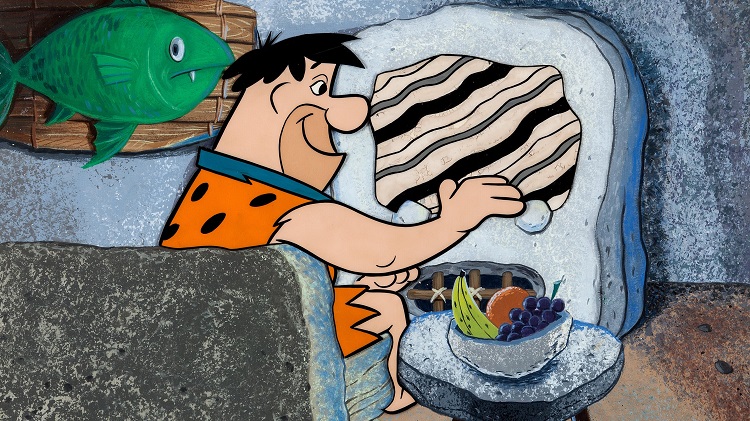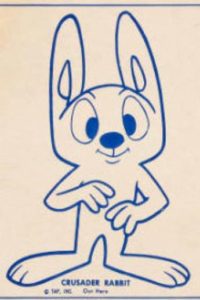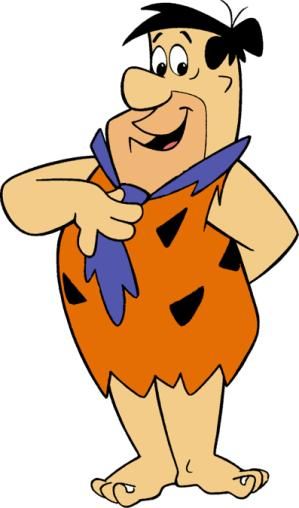
Welcome to Saturday Morning Superstars! This is a weekly column dedicated to an institution that played such a massive role in many of our childhoods, but that sadly no longer exists due to a variety of reasons– Saturday morning cartoons. Of course, there are still cartoons and kids’ programming on Saturdays, but it isn’t the same. This is dedicated to the heyday of an institution that every kid in America lived for.
The bulk of future columns will examine specific shows that aired during different decades, but I wanted to start with an overview to give some context to those installments.
The idea of placing children’s programming on Saturday mornings actually carried over from radio, before televisions were household appliances. When TV caught on in the early 1950s, this tradition continued in this new medium.
At that time, there were only three television networks — ABC, CBS, and NBC, but they didn’t dictate what was shown on Saturday mornings, so that fell on the local affiliates who chose their own programming. Originally that material was reused from theaters — The Three Stooges, The Little Rascals, Looney Tunes, Popeye, and Mighty Mouse were just a few staples, plus lots of westerns and matinee cliffhangers. Over time, primetime shows like Lassie and Dennis the Menace were also programmed into these slots.

The first cartoon made especially for TV was 1950’s syndicated Crusader Rabbit, an extremely limited animated series from Television Arts Productions and Jerry Fairbanks, Inc. Generally, it was the NBC affiliates that chose to air it. Crusader Rabbit was originally produced from 1950-52, with newer episodes arriving in 1958-59, but reportedly, it aired in repeats into the 1970s.
Mighty Mouse had debuted in theatrical shorts in 1942. But in 1955, he transitioned to television in Mighty Mouse Playhouse. That series ran on CBS for a whopping 12 years until 1967, using both theatrical shorts and new originals.
Hanna-Barbera, which is possibly the most prolific producer of TV animation, released its first original cartoon series, The Ruff and Reddy Show, in 1957. That was followed by The Huckleberry Hound Show (1958) and The Quick Draw McGraw Show (1959). Yogi Bear debuted on Huckleberry Hound, but he proved to be more popular than that series’ star and was given his own program, appropriately named The Yogi Bear Show in 1961. He remains one of Hanna-Barbera’s most famous characters. Ruff and Reddy was created for Saturday mornings, but the others were syndicated for weekday afternoons. Of course, over the years, these classics were rerun on Saturdays while newer cartoons featuring these characters were created specifically for that timeslot.

In 1960, Hanna-Barbera created another classic, The Flinstones, which aired in primetime on ABC. In 1962, it was joined by The Jetsons, also in primetime on ABC.
In 1964, the studio embarked on an experiment, a “serious” action-adventure series, Jonny Quest. Though still considered a high mark in TV animation to this day, Jonny Quest was not a big hit and only lasted for one season on ABC. But like The Flintstones, The Jetsons, and the earlier HB ‘toons, it aired in reruns on Saturday mornings off-and-on throughout the decades, as late as the 1980s.
It was during the mid-1960s that the networks began determining what shows would air on Saturday mornings, and in 1966, all three provided full lineups with hours of both original and recycled programming.
ABC offered Porky Pig (theatrical shorts), King Kong, The Beatles, The New Casper Cartoon Show, Milton the Monster, Bugs Bunny (theatrical shorts), Magilla Gorilla, Hoppity Hooper, and wrapped up the morning with American Bandstand.
CBS’ lineup consisted of Mighty Heroes, Underdog, Frankenstein Jr. and The Impossibles, Space Ghost and Dino-Boy, The New Adventures of Superman, The Lone Ranger (animated series), Road Runner, The Beagles, and Tom & Jerry (theatrical shorts).
NBC has the lightest lineup and the one that consisted of the most recycled material — The Super 6, Atom Ant, The Flintstones, The Space Kidettes, Secret Squirrel, The Jetsons, and Cool McCool.

Cartoons and non-animated children’s programming continued to thrive on Saturday mornings through the 1970s and 1980s, but a large number of factors led to the format’s downfall. I’ll get into that in future columns, but NBC was the first of the three major networks to abandoned animated cartoon blocks on Saturdays, in 1992. First, it shifted to live-action kids’ sitcoms, most famously Saved by the Bell, and then to sports. By 1995, ABC and CBS followed suit and dropped the ‘toons.
However, by this time, a new network, FOX, had begun airing cartoons, and when UPN and The WB launched they also offered animated programming on Saturday mornings.

During its final Saturday morning kids’ block, during the 2013-14 season, The CW (the merged UPN and The WB) aired its block entitled Vortex, featuring The Adventures of Chuck and Friends, Rescue Heroes, Sonic X, Bolts and Blip, The Spectacular Spider-Man, Justice League Unlimited, Dragon Ball Z Kai, B-Daman Crossfire, Yu-Gi-Oh!, and Yu-Gi-Oh! Zexal. And that was the last lineup of Saturday morning cartoons.
Nowadays, the early Saturday timeslot on most networks is composed of animal, travel, or cooking shows, in order to fulfill an FCC requirement that they provide a certain amount of educational programming each week. It helps that these shows are cheaper and easier to produce than animation.
But if you are a fan of classic cartoons on Saturdays, MeTV will launch a three-hour block next year appropriately called Saturday Morning Cartoons, featuring Looney Tunes, Popeye, Tom & Jerry, Droopy, and other old-school favorites. And of course, nearly every cartoon is available somewhere, whether it is on home video, streaming, or at the very least Youtube.
Come back next week for a more in-depth look at the early days of Saturday morning cartoon in the late ’60s. In the meantime, feel free to comment with any questions or memories you may have of this time!
Source: The Washington Post



